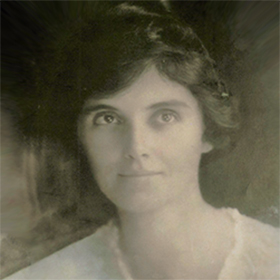Nineteenth-century New Bedford’s Sarah Rotch Arnold (1786-1860) was dedicated to her community, social reform, religious tolerance, and horticultural beauty. Sarah oversaw charitable work amongst families of seamen, supported abolitionist causes, and saw that “the spirit of Truth is not limited to any sect” of religious denomination. At the Arnold’s New Bedford mansion (now The Wamsutta Club), Sarah hosted leading intellectuals and made her renowned gardens open to the public on Sundays.
Nineteenth-century New Bedford’s Sarah Rotch Arnold (1786-1860) was dedicated to her community, social reform, religious tolerance, and horticultural beauty. Daniel Ricketson, New Bedford author and historian, described Sarah Rotch Arnold as “a lady long to be remembered for her virtues and rare accomplishments, both of head and heart, as well as of personal beauty and elegance.”
Sarah Rotch, the first child of William Rotch, Jr. and Elizabeth Rodman Rotch, was born on Nantucket on June 3, 1786. The family soon moved to New Bedford, where her father succeeded in whaling and banking. Sarah Rotch married James Arnold on October 29, 1807, and gave birth to Elizabeth, their only child, on January 17, 1809.
Beginning at age 18, in a series of letters written from 1804 through 1824 to her Aunt Charity in Ohio, Sarah reveals genuine concern for the poor and a mature tolerance for all religions as possible paths to fulfillment. In an 1805 letter, Sarah describes her visit to a poor dying mother and vows to assist her. In a subsequent letter, Sarah shares her hope that the minds of her community can move towards increasing assistance for the poor. In 1824, in one of her final letters to Aunt Charity, Sarah writes from Boston that she has spent time with people from many different religious denominations and that “I find vitally pious people amongst all – so that I can easily believe that the spirit of Truth is not limited to any Sect.”
As first president of the newly formed Ladies’ Branch of the Port Society in 1833, Sarah oversaw its charitable work among the families of seamen. After Sarah was named executrix of her father’s estate, the Port Society benefited further. In 1851, Sarah presented her late father’s mansion to the New Bedford Port Society for a “Mariner’s Home” to support seamen. Upon her death in 1860, Sarah provided an additional $10,000 to the Port Society, a gift that expanded the society’s focus beyond moral improvement to include benevolent aid.
The abolitionist newspaper The Liberator lists the Arnolds among its contributors in an 1851 report. Sarah herself participated in abolitionist activities, as evidenced in an 1859 letter written to her by Boston abolitionist Maria Weston Chapman, who requested that Sarah assist Harriet Tubman on an upcoming visit to New Bedford. Both Sarah and her daughter Elizabeth wintered in Boston and helped to fund Chapman’s anti-slavery activities.
At the Arnolds’ 1821 Federal mansion on County Street (now the Wamsutta Club), Sarah planned its renowned gardens to include exotic and native plants, as well as European trees and shrubs. Sarah welcomed visiting Black troops from New York to both her home and gardens, opened the spacious gardens for public use on Sundays, and hosted leading intellectuals, including Bronson Alcott, Ralph Waldo Emerson, Herman Melville, and John Quincy Adams.
Ann O’Leary
Information from
-
Arnold, Sarah Rotch. “Sarah Rotch Arnold Letters to Charity Rotch.” Massillon Memory Digitized Historical Collection of the Massillon Public Library, 1804-1824, http://www.ohiomemory.org/cdm/search/collection/p15005coll39/searchterm/sarah%20rotch%20arnold%20letter/order/nosort.
-
Ellis, Leonard Bolles. History of New Bedford and Its Vicinity, 1602-1892. D. Mason, 1892.
-
Grover, Kathryn. The Fugitive’s Gibraltar: Escaping Slaves and Abolitionism in New Bedford, Massachusetts. U of Massachusetts P, 2001.
-
Medeiros, Peggi. New Bedford Mansions: Historic Tales of County Street. The History Press, 2015.
-
Ricketson, Daniel. New Bedford of the Past. Edited by Anne Ricketson and Walter Ricketson. Houghton Mifflin, 1903.
![[Sarah Rotch Arnold], c. 19th century, Drawing, Courtesy of The Rotch-Jones-Duff House & Garden Museum Drawing of Sarah Rotch Arnold - a woman with her dark hair pulled back, wearing fancy laced clothing with a bonnet](https://historicwomensouthcoast.org/wp-content/uploads/2020/05/Sarah-Rotch-Arnold_280x280.jpg)




